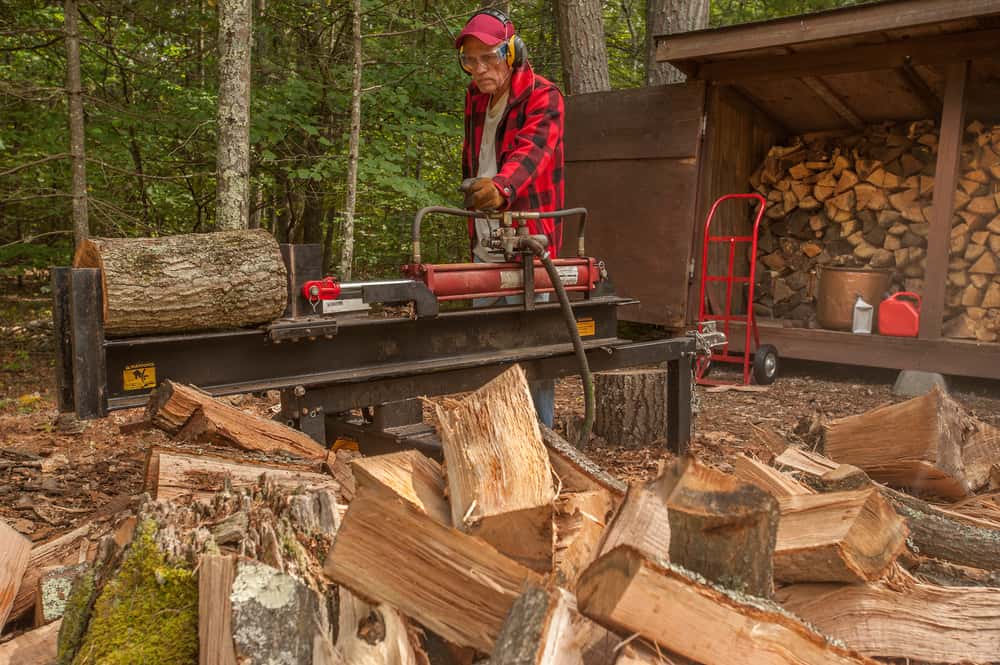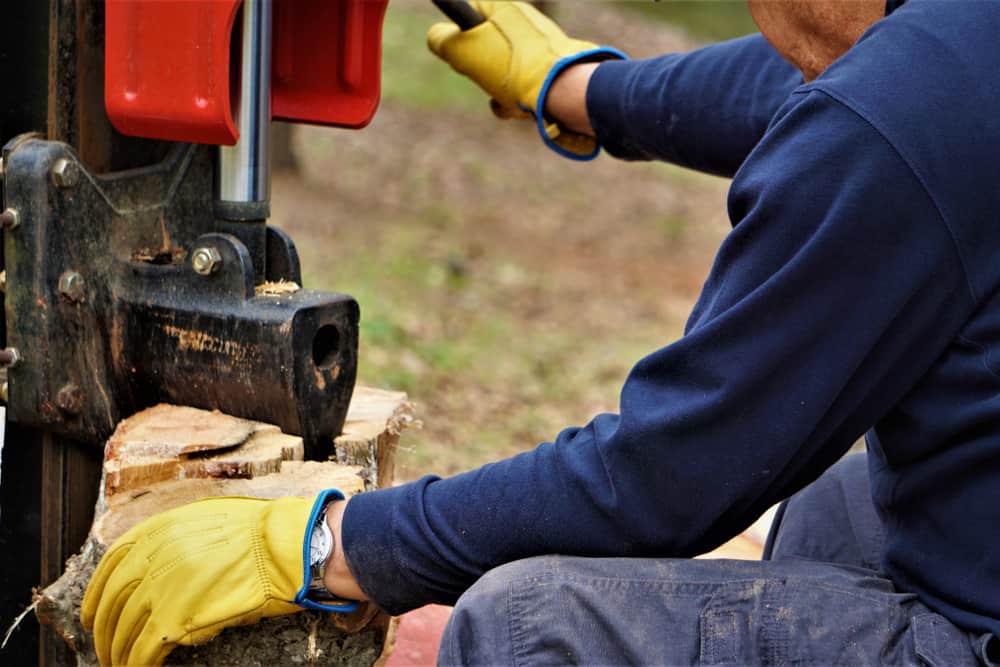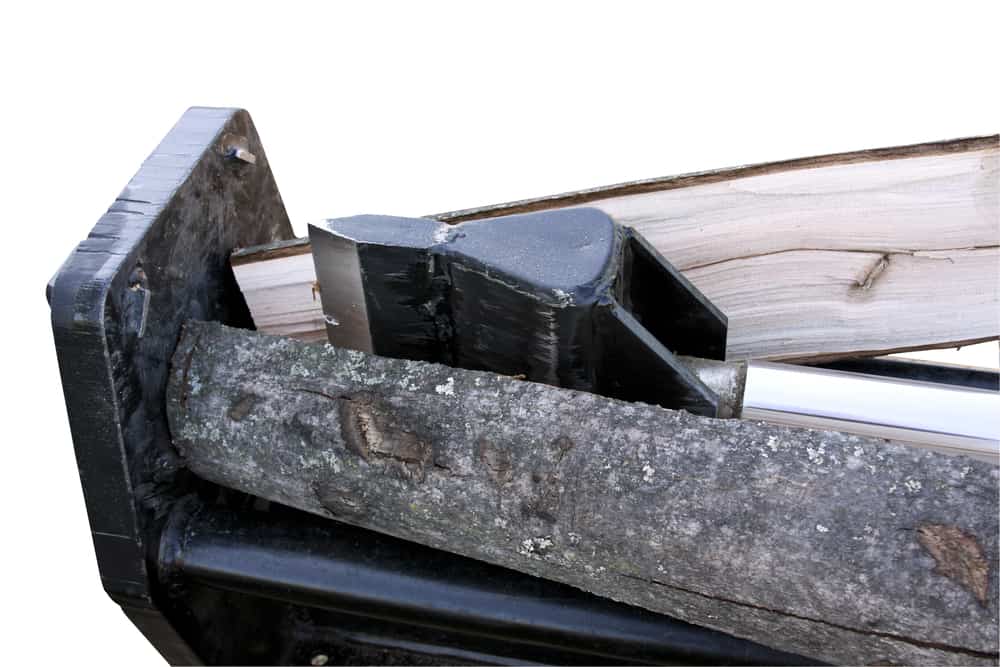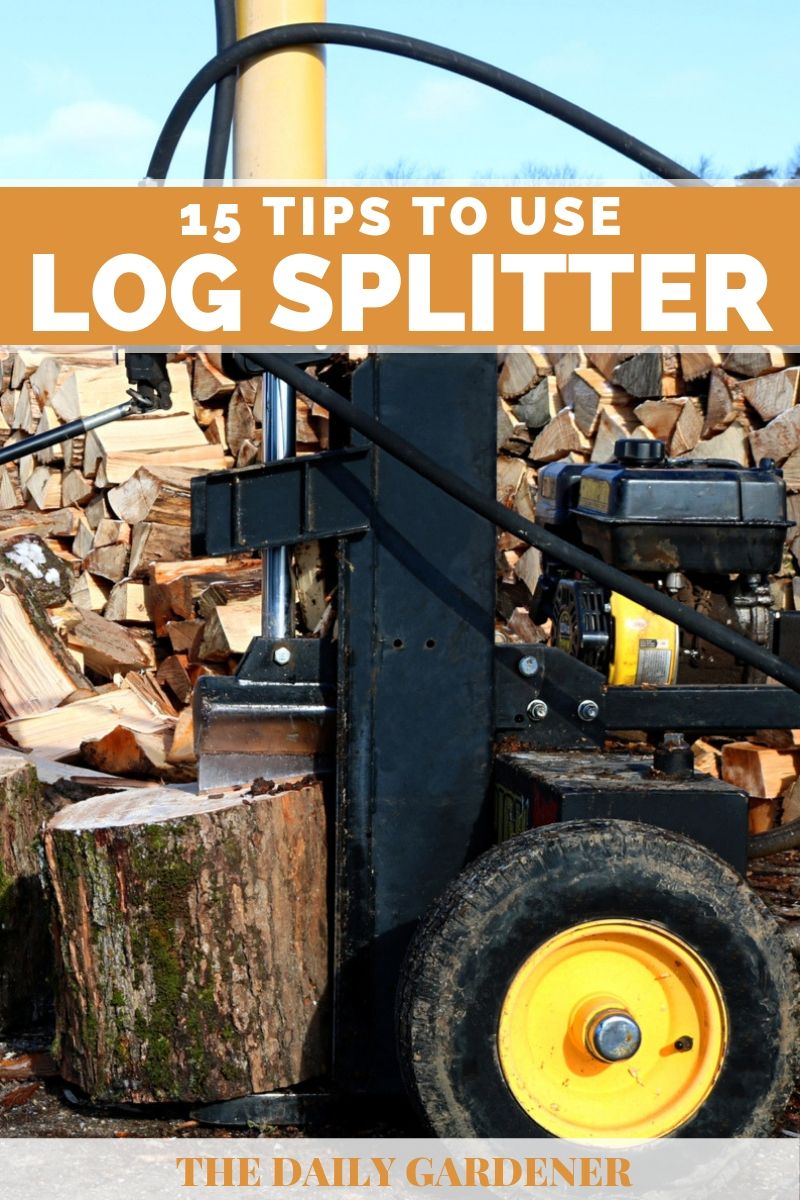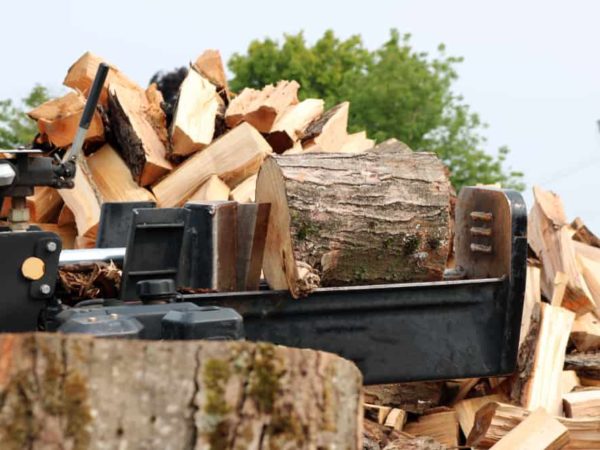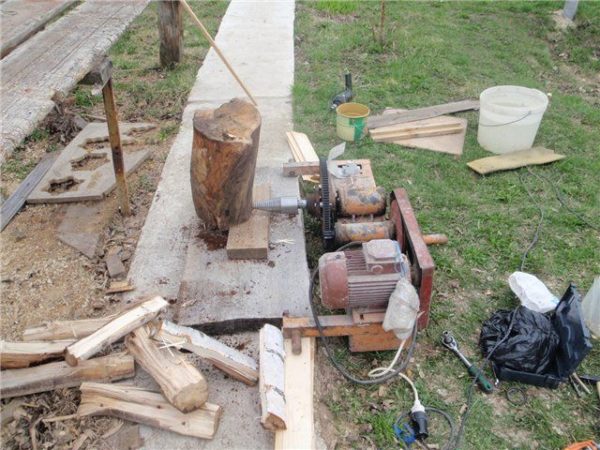Log splitters can be invaluable pieces of equipment that can take all the hassle and effort out of cutting up logs, allowing you to blast through a job in a fraction of the time it would take with an axe.
However, log splitters are large and potentially dangerous pieces of machinery, and you should make sure you know how to use them properly – both for safety reasons and in order to achieve the best results.
If you want a preview, here’s a video that teaches you the basics.
Here are our top 15 tips to use a log splitter correctly.
Safety first
When operating a log splitter – or any other kind of machinery – safety should always be your primary concern. Here are our top tips related to safety.
1. Wear the correct clothing and protective equipment
Before operating a log splitter, always make sure you are wearing suitable clothing and that you have the correct protective equipment.
One of the greatest dangers during normal operation is wood splinters flying about. For this reason, you should always wear protective goggles to protect your eyes. A flying wood chip in the eye can cause serious damage, so only safety goggles will do, not specs or sunglasses.
Wearing boots with steel toecaps is advisable to protect your feet from falling logs, and make sure you are not wearing baggy clothes that can become caught in the machine. Gloves are also advisable to protect your hands from splinters, and jewelry should be avoided.
2. Only one person should operate the machinery
This is a basic rule that should always be followed – the person who places and holds the log on the splitter should also be the person operating the controls.
This is important to avoid serious injuries where the mechanism starts before one person is ready. This type of accident can result in crushed hands or other body parts.
3. Make sure the work area is clear of debris
Make sure your work area is clear before you start working and keep it that way as the work progresses. This way, you will avoid tripping over any logs that are lying around and potentially causing a serious accident with the log splitter.
4. Don’t operate machinery under the influence of alcohol
It more or less goes without saying that you should never operate heavy machinery like log splitters under the influence of alcohol (or drugs). The risk of serious injury is too great, so don’t do it!
5. Secure the wheels with blocks
When you set up your wood splitter ready to start working, make sure you block off the wheels with blocks of wood.
One it starts splitting logs, especially with commercial log splitters, the forces generated can be huge, and when it recoils, it could cause the machine to roll forward onto you. Take steps to ensure this can never happen.
6. Always position your log splitter on flat, solid, even ground
As with #5 above, since the recoil can cause the machine to shift, always position it on flat, solid, even ground for operation. Failure to do so may see it tip over and even fall on you.
7. Never steady a log with your foot
This is a recipe for disaster for obvious reasons. To avoid the possibility of serious injury, never hold a log in place with a foot, knee or leg.
8. Check the beam is locked when switching between vertical and horizontal operation
Many log splitters can be used in a vertical or a horizontal position, and most will lock automatically when you change the configuration.
However, when you change from one to the other, always double-check to see if it has locked in place correctly – if for some reason it hasn’t, it can create a serious situation.
9. Only load logs that have been cut off squarely
If you load a log that is the wrong shape, it may ride up or even fly off the splitter under the pressure. Obviously, this can be extremely hazardous.
10. Read the manual
Every splitter is different, so it is very important to read the manual before you fire it up. Even if you have used log splitters before, you need to know how the one you are about to use functions as it may not be the same as you are used to.
Maintenance issues
To ensure you always achieve the best results, always maintain your splitter properly to keep it in good working order. Here are some of the most important points.
11. Check the hydraulic pipes before each use
Before starting work, each time, always check the hydraulic pipes to make sure there are no leaks.
12. Service gas engines at least annually
Gas engine models require more maintenance than electric log splitter, and servicing them should be part of your annual routine.
Before your splitting season begins, check that the fuel is clean and fresh, top up the oil, check the spark plug (and replace if necessary) and generally ensure it is in good working order.
If you use your splitter year-round, you may need to service it twice a year – decide on a maintenance schedule and stick to it.
13. Remove fuel if you are not going to use it for a while
If you have a gas log splitter and you are not going to use your splitter for an extended period – anything over a month – make sure you remove the fuel from the tank.
Gasoline doesn’t age well, and if you leave it in the tank for more than 30 days, it will begin to turn into a sticky mess that will need to be removed later at the very least – and may damage the engine in the worst case scenario.
14. Check that oil is topped up
Many splitters have a low oil auto-off feature – but you should still try to get into the habit of checking the oil level. Checking each time you refuel is a good way to do it. It only takes a few moments, and this way you will never forget.
15. Sharpen the wedge
Keeping the wedge sharp is one way to ensure you always achieve the best results. If you don’t, it may have trouble splitting the wood cleanly – and with tough or knotted woods, you may even bend or damage the wedge.
Safety and maintenance
Successfully using a log splitter depends on two things – safety and maintenance. Safety should always be your first thought, with log splitters as well as with any other machinery.
If you take the proper safety precautions, you know how to operate the machine and always ensure it is in good working order, you should be able to split as many logs as you need without any unwanted mishaps.
Don’t forget to pin it!




